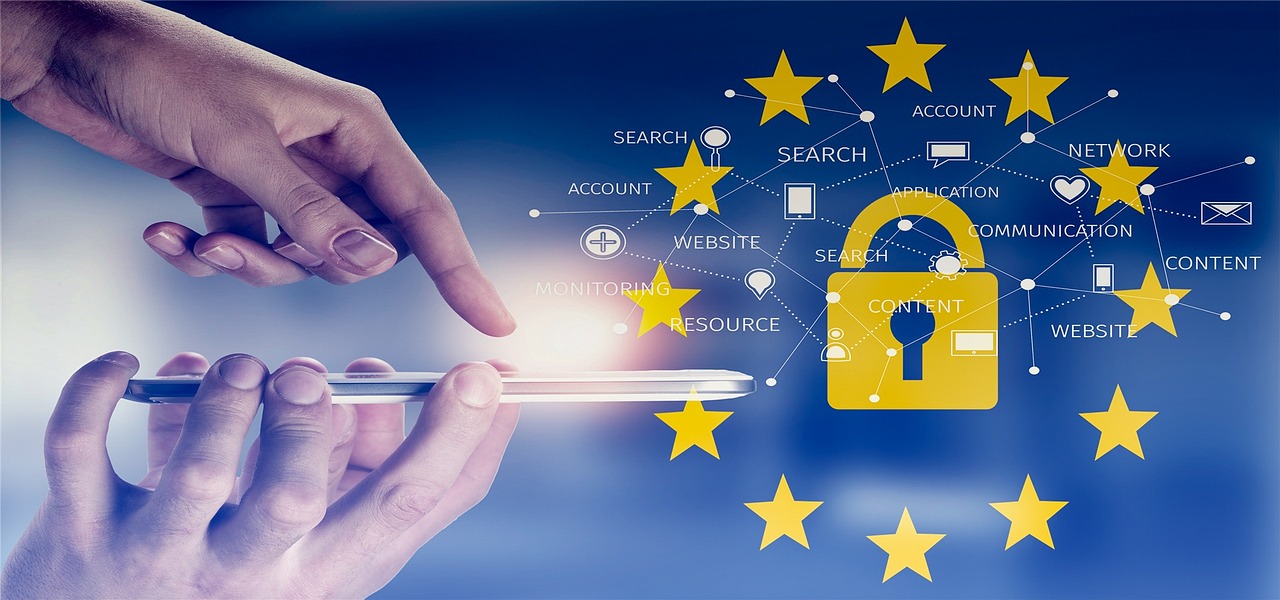Data privacy involves an individual’s right to control how their personal information is collected, used, shared and stored. It also encompasses security measures. Businesses face a growing number of privacy laws across the US and abroad.
These laws require transparency and accountability in how they handle data. This includes how they use it in automated decision-making. Automating legal opinions on data privacy is a complex but increasingly feasible task thanks to advancements in natural language processing (NLP) and artificial intelligence (AI).

1. Automated Responses
Businesses can implement privacy automation in a variety of ways. For example, automating responses to data subject requests (DSRs) allows companies to respond more quickly to DSRs and provide more accurate information. In addition, the automation of responses can be tied into existing data sources and processes, making it more efficient than manually processing these requests.
Customers value excellent customer service, which often requires that they receive a timely response to their inquiries. In the event that a business contact is out of the office, on vacation, or unavailable for other reasons, an automated reply can keep the customer in the loop by letting them know their inquiry has been received and that they will be contacted when a staff member returns.
The GDPR and the national privacy laws of Brazil, China, and South Africa all give individuals a right to redress when they are harmed by automated decision-making. In the US, privacy legislative proposals in California, Virginia, Colorado, and Connecticut—as well as the White House’s AI Bill of Rights—embrace this model by requiring businesses to tell individuals which personal data is used to make automated decisions, to explain those decisions in plain language, and to consider whether the decision would have been made differently under human review.
2. Automated Documentation
Data privacy is a complex web of regulations that vary by region and industry. When vetting data privacy automation solutions, organizations should look for solutions that can quickly identify and comply with the laws in their geographic regions and industries. They should also look for solutions that are scalable to their expanding businesses and anticipate future regulation changes. In addition, companies should examine how their solutions address redress for individuals who are harmed by automated decision-making. The GDPR, California’s new law and the White House AI blueprint encourage a right to human review of automated decisions.
As a best practice, companies should involve a legal sponsor (often a senior lawyer) in document automation projects to help reassure teams about the need for the tool and critical use cases unique to their firm. The legal sponsor will also be an important part of ensuring that the company’s third-party providers are providing sufficient documentation to support compliance. Moreover, they will ensure that the company is able to meet its client expectations of a smooth user experience when generating documents.
3. Legal Opinion Generation
Legal Opinion Generating involves the creation of algorithms that can generate comprehensive legal opinions based on user input or case-specific information. This automated process uses advances in artificial intelligence (AI), natural language processing (NLP), and data privacy to provide valuable insight and guidance within the law field.
A key feature of legal opinion generation involves the ability to customize the response to meet the needs of the user. The algorithms must not be a one-size-fits-all solution, but should instead consider the level of analysis needed. It is therefore important to provide a range of opinions ranging from simple explanations to detailed legal analyses. This flexibility allows the user to find information that suits their needs, whether it’s a general understanding or a detailed analysis of their case.
These basic explanations are a good place to start for those who want a basic understanding of their situation. These simplified opinions are a great way to clarify basic legal concepts, and they can serve as a basis for further investigation. A business owner, for example, may require a basic understanding of the data privacy laws that apply to his or her operations.
In contrast, in-depth analyses of the law are essential for complex situations or cases that require a thorough examination and consideration of all legal implications. These comprehensive opinions provide detailed guidance, as they delve deep into the nuances of the law and cite relevant precedents. A legal professional who is responsible for data privacy compliance at a multinational corporation would benefit from an in-depth analysis of the regulations and how they impact their practices.
Legal opinion generation via algorithmic automation is an effective tool that can be tailored to meet the needs of different users who are seeking legal advice. This technology, which offers a range of opinions from simple explanations to detailed legal analyses, makes it easier for individuals and organizations to access legal insights. It also empowers them to make well-informed decisions in the complex world of data privacy. It bridges the divide between those with legal expertise and those who need legal advice. This promotes efficiency and accuracy within the legal field.
4. Risk Assessment
The implementation of a risk assessment component in automating legal opinions about data privacy is an important step. This component is used to evaluate and analyze the legal risks that may be associated with certain data privacy strategies or actions. It allows organizations to make informed decisions in the constantly evolving landscape of data protection legislation.
To identify and quantify legal risks, the risk assessment component uses algorithms and data-analysis techniques. The risk assessment component begins by assessing the specific strategies or actions under consideration. If, for example, a company intends to collect and use customer data in targeted marketing, then the risk component will evaluate the legality of the action against relevant data privacy laws like GDPR or CCPA.
The system uses a variety of variables and factors to perform an effective assessment of risk. This may include factors such as the type of data being processed, its purpose, geographical scope, and applicable legal frameworks. These factors allow the system to identify potential gaps in compliance and areas of vulnerability.
The risk assessment component is also capable of assigning risk scores or probabilities for different scenarios. This allows organizations to prioritize high-risk areas and take proactive measures to reduce potential legal consequences. If the system detects that there is a high risk of noncompliance, it can recommend adopting data retention policies in accordance with legal mandates.
Automating the risk assessment allows organizations to take a data-driven and systematic approach to risk management and compliance. This reduces the need for manual legal assessments that can be time-consuming and subject to human error. It also helps organizations adapt to the changing regulations on data privacy, helping them avoid expensive legal penalties and remain compliant.
Implementing a risk assessment element within the automated legal opinions on data protection is a fundamental first step toward effective compliance and risk management. This component, which uses algorithms and data analytics, allows organizations to identify, quantify, and prioritize legal risks that may be associated with their compliance and data privacy strategies. This proactive approach improves compliance with the law, reduces the risk of legal disputes, and contributes to a robust and legally sound data privacy framework.
5. Automated Compliance

The COVID-19 pandemic drove many business leaders to slash budgets, and compliance costs were often among the first to go. The result is that today, many businesses lack effective governance, risk, and compliance (GRC) processes or systems.
These gaps can expose the organization to substantial legal risks, including fines and penalties, litigation, and reputational damage. Moreover, they can stifle innovation. The good news is that a privacy software solution that automates compliance processes can help close these gaps.
A comprehensive data protection compliance framework begins with a complete assessment of existing regulations, industry standards, and internal policies that must be adhered to. It then identifies specific compliance requirements that are ideal candidates for automation. This allows the security or compliance team to select technology tools and software that can automate these processes.
In addition to the automation of manual workflows, the right software should offer other capabilities that improve a business’s ability to comply with regulatory requirements. For example, it should allow businesses to categorize and tag data automatically based on its sensitivity, as well as existing information security policies and processes. It should also provide at-a-glance, user-friendly icons and labels that can be federated across the entire enterprise.
Another useful capability is the ability to test controls. This is a laborious process, as it requires compliance personnel to select a sample of transactions, gather the data, perform the tests, and document the results. A privacy software solution that enables automated testing can eliminate much of this work and provide significant time savings.
It should offer a platform that provides compliance reports. This can be especially helpful for businesses that need to demonstrate compliance to customers or regulators. The right tool can automate these reporting functions and deliver a complete set of reports that can be customized to the needs of specific stakeholders.
A privacy software solution that combines these capabilities can help companies stay compliant while enabling them to maximize the value of their users’ data. In an age where trust is a key currency, it’s crucial for companies to ensure that their privacy practices are robust and efficient.
Here are some key aspects to consider when discussing a Privacy Compliance Checker:
a. Regulatory Alignment
The Privacy Compliance Checker is primarily aligned with specific data privacy regulations relevant to the organization’s operations. For example, it may focus on regulations such as GDPR (General Data Protection Regulation), CCPA (California Consumer Privacy Act), HIPAA (Health Insurance Portability and Accountability Act), or sector-specific laws like the financial industry’s GLBA (Gramm-Leach-Bliley Act).
b. Data Assessment
The module assesses how an organization collects, processes, stores, and shares data. It examines the organization’s data handling practices to determine whether they align with the legal requirements stipulated in the relevant regulations.
c. Data Mapping
It helps create a comprehensive map of an organization’s data ecosystem, identifying the types of data being collected, where it is stored, who has access to it, and how it is used. This mapping is crucial for understanding data flows and potential vulnerabilities.
A Privacy Compliance Checker evaluates the level of risk associated with an organization’s data practices. This includes identifying potential data breaches, privacy violations, or non-compliance issues.
d. Gap Analysis
The module conducts a gap analysis by comparing an organization’s existing data privacy practices against the requirements of applicable regulations. It highlights areas where the organization is falling short of compliance standards.
Privacy Compliance Checkers automate the audit process, reducing the reliance on manual assessments. This not only saves time but also increases accuracy in identifying compliance gaps.
Once compliance gaps are identified, the module provides recommendations for corrective actions. These suggestions may range from revising privacy policies and implementing data security measures to appointing Data Protection Officers (DPOs) or conducting privacy impact assessments (PIAs).
e. Reporting and Documentation
Privacy Compliance Checkers generate reports that document the assessment process, identified risks, and recommended actions. These reports can be used for internal record-keeping and, in some cases, for demonstrating compliance with regulatory authorities.
Compliance is not a one-time task but an ongoing process. The module typically includes features for continuous monitoring to ensure that corrective actions are implemented and that the organization remains in compliance as regulations evolve.
f. Privacy by Design
The concept of “privacy by design” is often incorporated, which means that data protection and privacy considerations are integrated into the organization’s processes and systems from the outset, rather than added on as an afterthought.
A Privacy Compliance Checker is an essential tool for organizations that handle personal data. It helps them navigate the complex landscape of data privacy regulations, assess their compliance status, and take proactive steps to mitigate risks and maintain a strong commitment to data privacy. By automating many aspects of compliance assessment and monitoring, it enhances efficiency and accuracy, reducing the likelihood of costly non-compliance issues.
